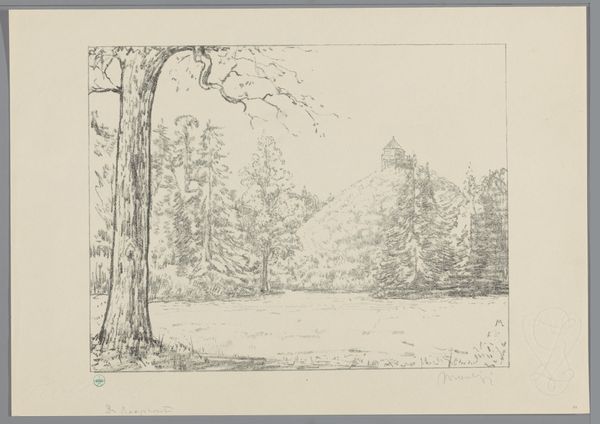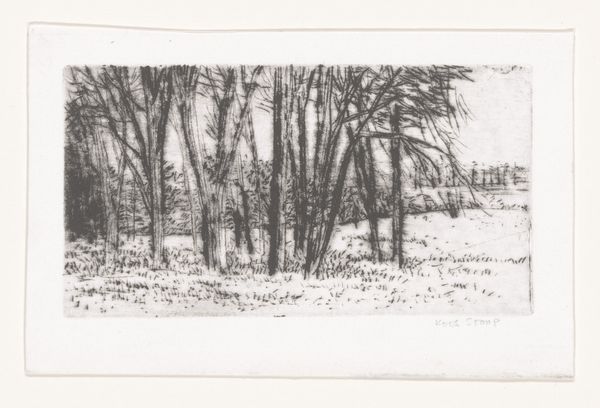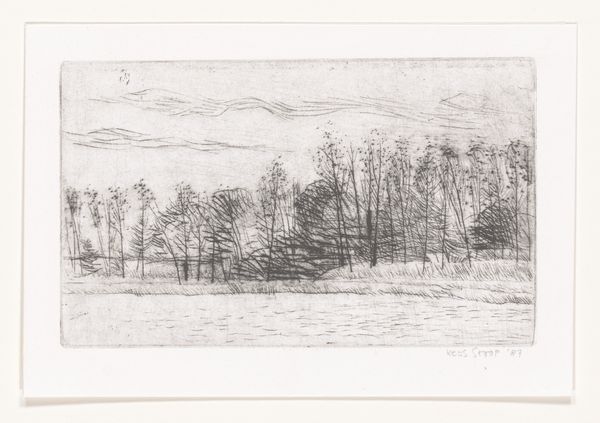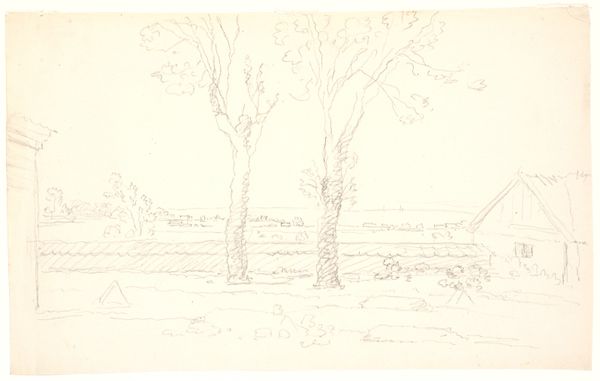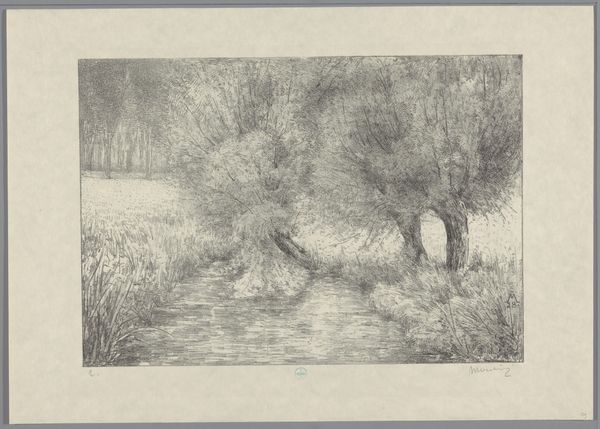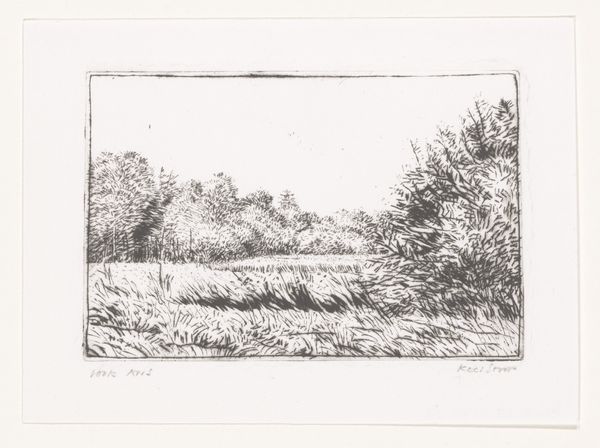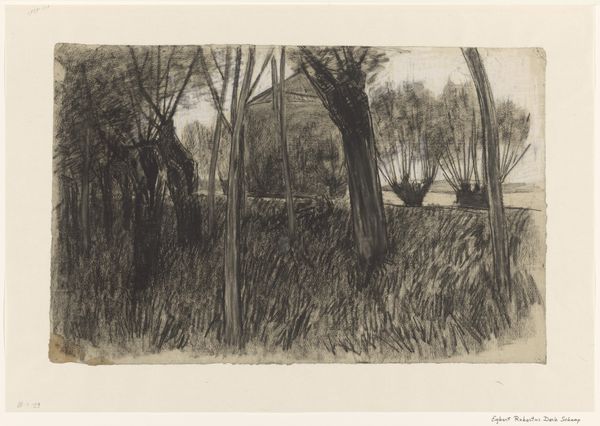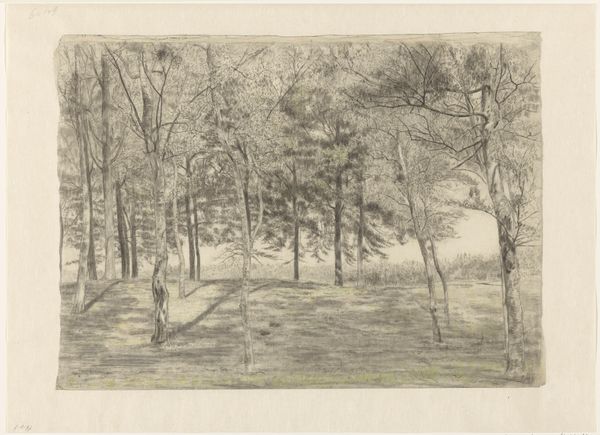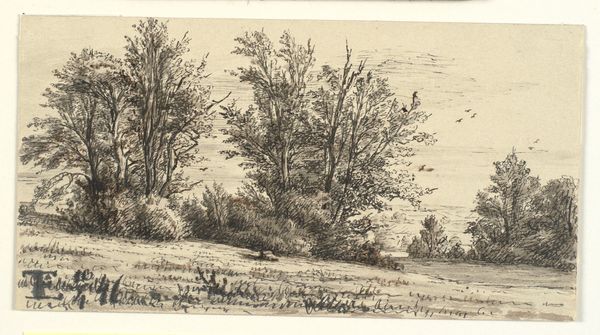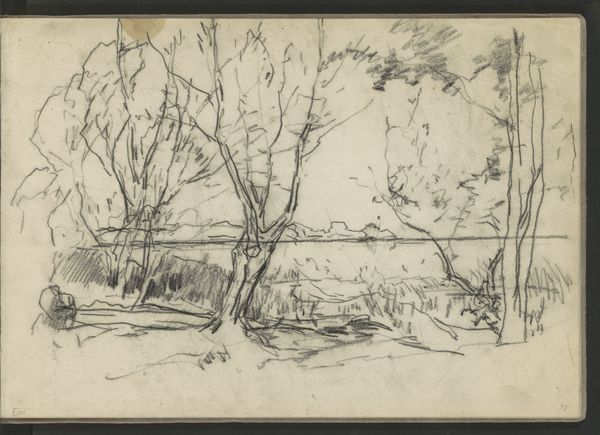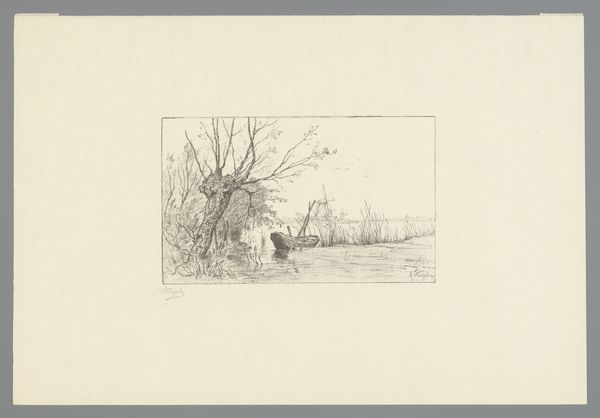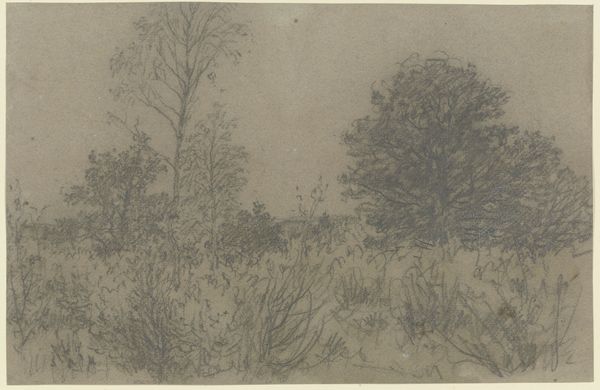
drawing, ink
#
drawing
#
pen sketch
#
landscape
#
ink
#
linocut print
#
ink drawing experimentation
#
line
Dimensions: height 300 mm, width 422 mm
Copyright: Rijks Museum: Open Domain
Curator: Standing before us is "Trees by a Lake," a drawing created with ink on paper by Simon Moulijn in 1926. It resides here at the Rijksmuseum. Editor: The scene feels remarkably still, doesn't it? A sense of tranquility emanates from those slender trees mirrored ever so slightly on what I presume to be a lake or slow-moving river. Curator: Absolutely. The calmness portrayed must be considered with the larger political picture in mind, with the rise of nationalism throughout Europe between the wars. What we read as escapism or idyllic scene hides perhaps the acknowledgement of those historical issues. Editor: The lines of the drawing contribute heavily to the visual weight, wouldn't you say? The hatching and cross-hatching create an almost palpable sense of depth within a limited range of tones, it's incredible. Curator: True, but notice too the absence. There isn't human presence, not directly. Even the architecture of human oppression is not implied, it’s only nature and the supposed democratic freedoms nature provides. I wonder, who has access to that freedom? Is it for all? Editor: I do see what you mean, how those questions of privilege inform a new reading of the image, but can it be that an artist merely loved landscape, trees and water? What do the trees suggest? Is it merely a representation or a reference to nature’s spirits? To the powers of our surroundings and the symbolic properties within that symbiosis? Curator: Well, an intention doesn't negate its intersectional position. It's worth asking who determines what "landscape" is worthy of depiction. Is it for all and are such scenes not tied to colonization, and ultimately capitalism? The questions still hold value when viewing. Editor: Perhaps we can find common ground then. Regardless of context, which informs perception in its own manner, the consistent language of nature worship permeates our world. It reveals cultural memory, connecting the symbols across time to evoke this collective unconscious about natural and environmental resources. Curator: Indeed. Moulijn’s composition offers fertile ground for contemplating both visual form and political landscape. The absence of any living figure prompts inquiry, for surely this imagined scene would not provide refuge to all equally, even then. Editor: So, maybe "Trees by a Lake" shows us how nature has become the mirror, reflecting humanity’s constant need to both escape into it, whilst imposing back onto it so many cultural, political and societal interpretations.
Comments
No comments
Be the first to comment and join the conversation on the ultimate creative platform.
